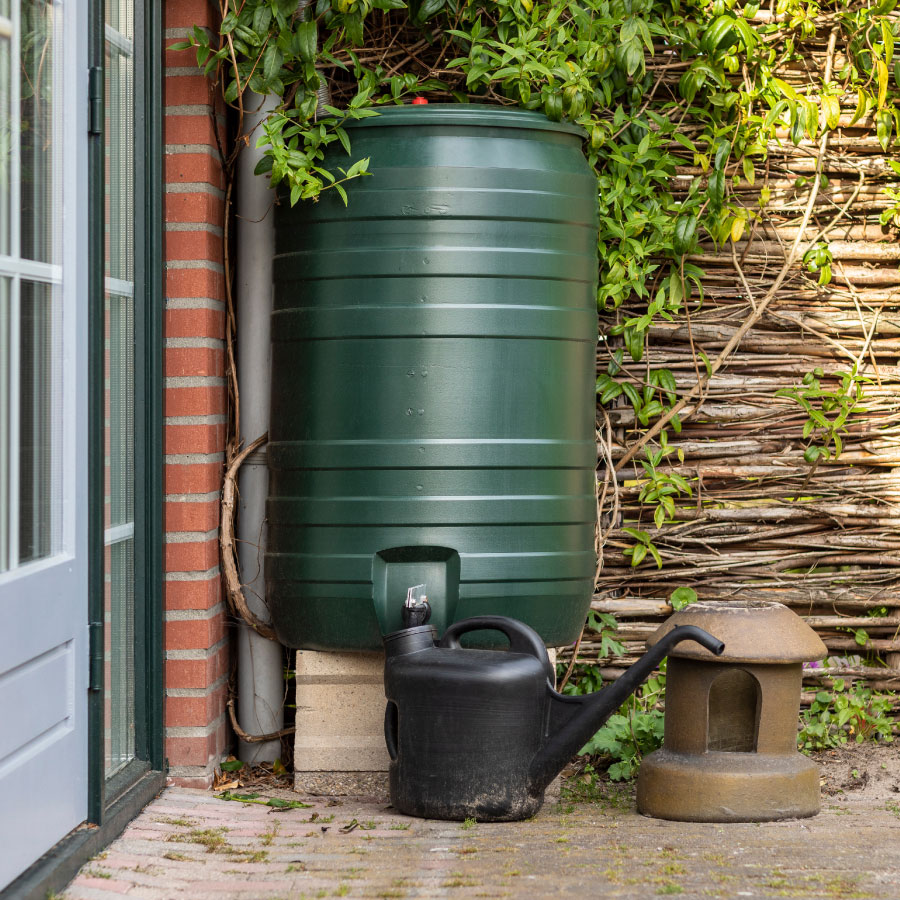Once you have established your needs and end goal, it is now time to move forward in the RWH process – choosing which storage vessel will work for you.
This includes where you want your tanks and what your tanks are made of. This determines whether you want tanks above ground or underground and whether the tank suits the look and feel of your home (the aesthetic).
Remember that tank size will be limited, based on the space you have to store them.
Tanks come in many materials including plastic, steel and concrete. This will also be a decision to make, based on your water needs and how you want your storage system to work.
There are two types of systems when it comes to RWH, a dry system and a wet system, with the main difference between the two systems being how the water is stored and transported.
In a wet system, the rainwater is stored in an underground tank or cistern that is located beneath the ground surface. The tank is typically made of concrete or plastic and is designed to hold a large volume of water. The tank is connected to the downspouts from the roof gutters, and the water is transported through a pipe to the tank. Since the tank is located underground, the weight of the soil above it helps to keep the water pressure consistent. A pump is typically used to extract the water from the tank and transport it to where it is needed.
In a dry system, the rainwater is collected and stored above ground in a tank or cistern that is located near the house or building. The tank is also connected to the downspouts from the roof gutters, and the water is transported through a pipe to the tank. Unlike a wet system, the tank is not buried underground, and the weight of the water is what creates the pressure needed to transport the water to where it is needed. A pump may still be used in some cases to increase water pressure, but it is not always necessary.
Overall, the main difference between a wet system and a dry system is where the water is stored and how it is transported. Wet systems store water underground, while dry systems store water above ground. Both systems can be effective in conserving and re-using rainwater, but the choice of system will depend on factors such as space availability, cost, and personal preference.
When it comes to your collection area, we need to check your roof that it doesn’t contain any harmful materials such as lead paint and corrosion. This is the same when it comes to checking your gutters. The best way to check this is to spray down your gutters with a hose and assess if your gutters need to be replaced first.
The environment in which you stay can also affect the quality of your rainwater. If you live in a condensed area, your water will be more polluted and will have to undergo a more efficient filtration system. If you live in a less condensed area, your water will be less polluted and will require only basic filtration.
